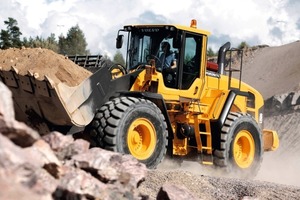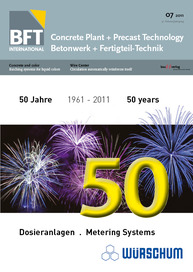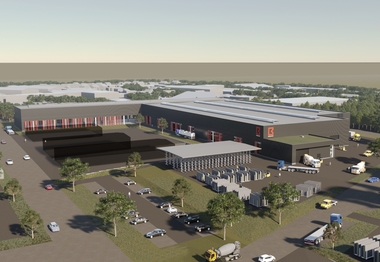New EU-exhaust emission directive
The introduction of the EU-Exhaust Emission Regulation Stage III B poses a enormous challenge for the con-
struction machinery manufacturers. A great deal of investment and development capacity is necessary. For the buyers that means higher prices, in some cases greater efficiency on the building site. VDMA sees tighter regulation as “counter-productive”.
At the Wirtgen-Group, the world’s largest manufacturer of road construction machinery, a major restructuring process is currently underway. “We have”, says Dr. Günter Hähn, “a production programme that has practically doubled”. The unit figures have halved and expenditure almost doubled. “We have to adapt our machines. That costs a lot of money.” What the Executive Director in charge of Wirtgen GmbH’s Technical Division is referring to are the effects of the exhaust emission regulations, which have been in force in Europe and the USA since beginning of this year. Hähn estimates that approximately one third up to half of all development capacities within the group have been taken up by this theme for many months and this will continue to be the case for an indefinite period. The expenditure and costs are enormous. Thomas Weber, Managing Director Volvo Construction Equipment Germany GmbH, says: “We have had to completely change the design of our large wheel loaders”. What the Volvo-Manager, similar to Wirtgen Executive Director Hähn, would like to see is a “realistic comparison of costs and benefit and the resulting practically-orientated solutions”. The relation must be right he said.
The situation is practically the same for all manufacturers of construction and building material machinery not only in Germany, but throughout Europe and also in the USA. Since the start of this year mobile new machines in the over 130 kW and less than 560 kW categories, which are sold in the USA or Europe, must conform to exhaust emission regulation Stage III B and US norm tier 4 Interim respectively. From 1 January 2012 this will then also apply to the performance classes between 57 and 130 kW and one year later the smaller machines ranging from 37 to 56 kW will be affected. For the manufacturers this means considerable expenditure. Exemption clauses have little or no effect on this.⇥




